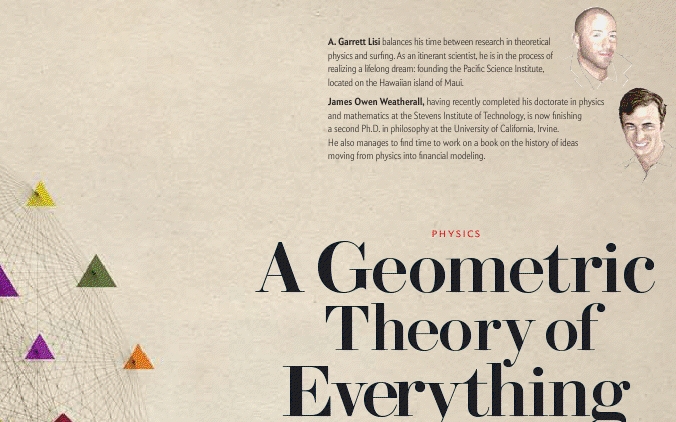Group theory is a fascinating branch of mathematics, and its connection with fundamental physics has kept becoming stronger with time, ever since the neutron was discovered in the early thirties. The proton and the neutron were observed to be two quite similar particles. Sure, they had a different electric charge: the proton, carrying a +e charge (in electron charge units) was a totally different beast from the neutron, not subject to zeroth-order electromagnetic interactions; and yet, if one forgot electromagnetism, the two were quite similar: their mass difference was about a thousandth of their mass sum (a difference entirely ascribable to electromagnetic effects), and the cross sections for strong interactions at the first particle accelerators soon turned out to be quite similar, too.
Physicists have known for a century -since the work of Emmy Noether- that when there is a degeneracy (more things appearing as a single entity, or different processes showing the same behaviour) there is a underlying symmetry, and a corresponding conserved physical quantity. With the proton and the neutron, it was easy to decide that they were two aspects of the same thing, the "nucleon", of which proton and neutron were just two different manifestations, only apparent through the differentiating action of electromagnetic interactions. The duo fit well within a "representation" of a group (called "the group of isospin rotations") describing special transformations similar to rotations on a 3-dimensional space. By describing the nucleon in that space, one could advantageously make calculations of the phenomenology of particle reactions.
Isospin was later extended to a larger group by Gell-Mann, who in 1964 understood that the multitude of discovered hadrons could be put in one-to-one correspondence with elements of the fundamental representations of that group (called "SU(3)"). The reason was simple: all hadrons that far discovered contained combinations of three different quarks, the up, down, and strange. With quark-antiquark pairs composed of any of the three you could construct eight different states carrying the same symmetry properties with respect to the exchange of a quark with another.
While Isospin was just a nice mathematical framework, Gell-Mann's eightfold way was a true eye-opener for particle physicists. Since then, attempts to fit within group structures not only the fermions describing matter, but also the bosons describing fundamental force exchanges have been going on. The Standard Model is in fact such a structure: it is the group product of SU(2) transformations of "weak isospin" with U(1) transformations of "weak hypercharge", if you dared to ask. The group symmetry of the Standard Model is broken partly by the action of the Higgs boson, but I would be diverging too much if I went on to discuss that.
Instead, let me just mention that attempts at building a "theory of everything" by unifying the various forces of nature as the manifestations of the symmetries of a large group have gone on incessantly. These attempts sometimes pass through the formulation of a Supersymmetry between fermions (matter particles) and bosons (force carriers), or they otherwise try directly to include gravity in the description of fundamental forces.

I will not delve into the discussion of the exciting properties of the E8 group, which has been identified by Garrett Lisi as the possible "super-structure" from which the subgroups describing all matter and all force fields could emanate. Instead, I would advise you to read his Scientific American piece. For the curious among you, there is also the possibility to examine the weight diagrams of the E8 group by using a quite cool internet tool made available here by Garrett, called the "elementary particle explorer". For experts, of course the main reference is this
preprint.
Post Scriptum: For a much more technical discussion, especially in the lively comments thread, please see Peter Woit's take at this.



Comments